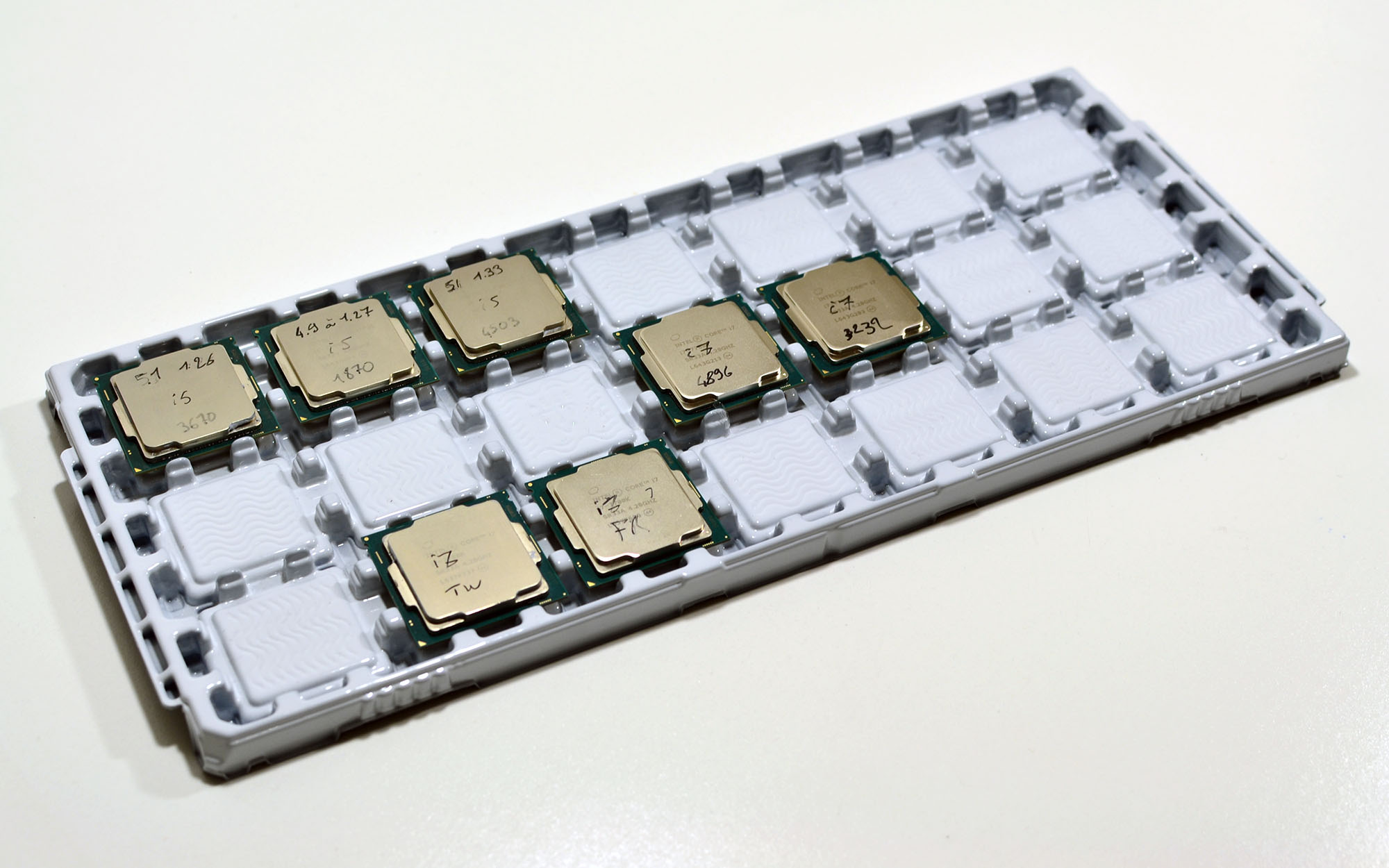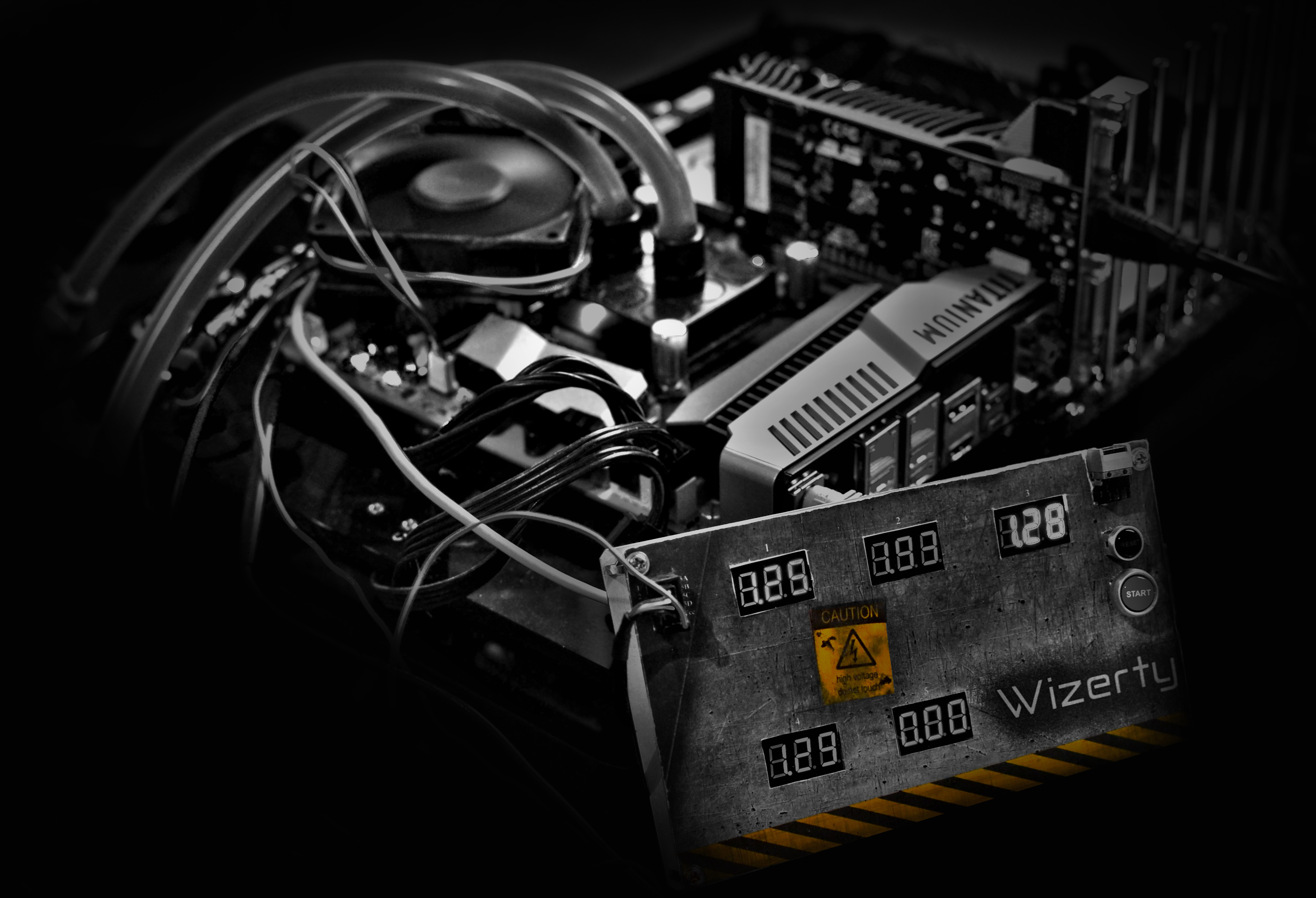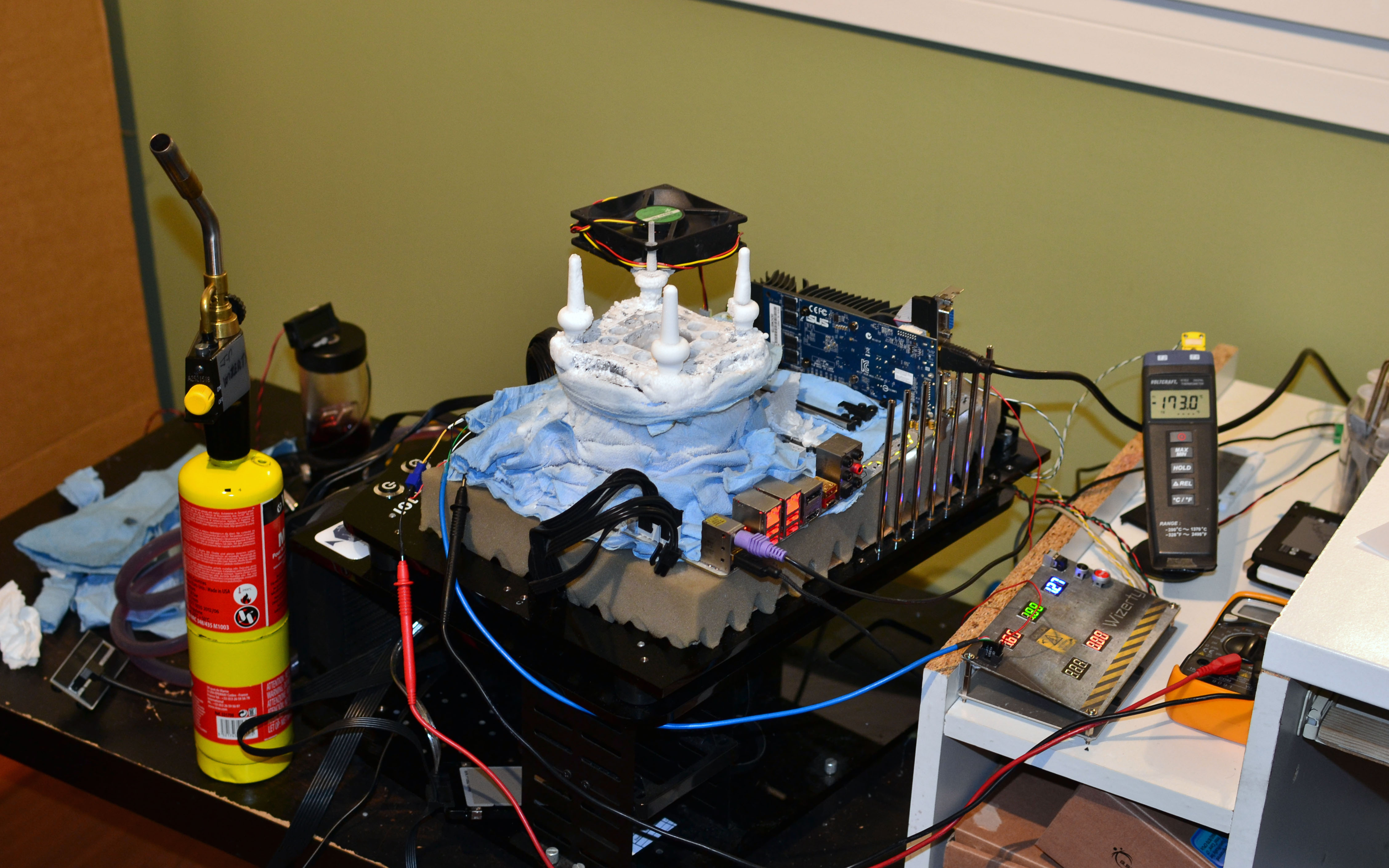De-Lidding and Overclocking Core i7-7700K with Water and LN2
We're testing Kaby Lake's maximum frequency at various core voltages, the influence of de-lidding, and even applying a bit of liquid nitrogen. Get ready to learn more about overclocking Intel's latest architecture with a bunch of Core i7-7700K CPUs.
How'd We Do with 20 Core i7-7700K CPUs?
Overclocking potential can vary tremendously from one processor to the next. In order to give you a better idea of what you might encounter, we tested several processors under similar conditions.
All tests were performed with Cinebench R15, before de-lidding. This is not a stable frequency under AVX-heavy software; we'd need to use a -200 MHz offset for stability in those.
Results From 20 Core i7-7700K CPUs
- The worst -7700K we tested would not pass Cinebench R15 at 4.8 GHz using 1.3V.
- Around 25% were not stable at 4.9 GHz using 1.3V.
- Less than 50% pass 5 GHz at 1.3V.
- Around 25% pass 5 GHz at 1.25V or less.
- The best -7700Ks we tested pass Cinebench R15 with 5 GHz at 1.23V.
Those are the results we observed, but there are undoubtedly better samples out there. A diamond in the rough may be on a shelf waiting for your to discover it!
We've heard of enthusiasts seeing 5 GHz at 1.16V. This isn't impossible, but we don't have a Core i7-7700K capable of such a feat. A de-lidded processor or one tested at 10°C requires less core voltage. Certain motherboards can also be slightly less power-hungry. And measurement tools and software must also be trustworthy.
A First Test with Three Core i5-7600Ks
We were only able to test three Core i5-7600K processors. Although the sample number is too small to derive trustworthy statistics, we can get an idea of the possible performance range (even if the real spread is larger than our observations).
- The worst -7600K we tested would not pass Cinebench R15 at 4.9 GHz with 1.28V.
- The best -7600K we tested would not pass Cinebench R15 at 5 GHz with 1.2V.
- The third needed 1.28V for 5 GHz.
We hear you. "1.2V for 5 GHz? That's harsh!" True. But keep in mind that the -7600K does not have Hyper-Threading, so it won't run as hot.
Kaby Lake is Good for Overclocking
We thoroughly enjoyed playing with these Kaby Lake processors. They aren't revolutionary in any way, and performance at a given clock rate is identical to Skylake. But from overclocking point of view, Kaby Lake is attractive from all angles.
Get Tom's Hardware's best news and in-depth reviews, straight to your inbox.
Not everyone will reach speeds in the 5 GHz range. However, that should be an attainable goal for the most cooperative -7700Ks. If you don't get lucky with your sample, the introduction of an AVX offset could give your overclock a second chance.
Only you can determine if de-lidding is worth the risk inherent to such a serious modification. If you don't plan on pushing your core voltage beyond 1.25 to 1.3V, you probably shouldn't bother. On the other hand, if you're gunning for a big overclock using aggressive voltage settings, the gain will be much more worthwhile.
If you consider yourself an overclocker, and you were disappointed by the headroom of Intel's past few architectures, Kaby Lake is calling. We promise you'll have some fun with this one!
MORE: Overclocking GeForce GTX 1080 Ti To 2.1 GHz Using Water
MORE: CPU Overclocking Guide: How (and Why) to Tweak Your Processor
Current page: How'd We Do with 20 Core i7-7700K CPUs?
Prev Page Overclocking with Liquid Nitrogen-
rantoc Intel should be ashamed of themselves for applying such useless TIM to save a few cents in a "high end" product as they like to call it!Reply -
AgentLozen Very fun article to read.Reply
You guys were using water cooling and liquid nitrogen for this experiment. I wonder how well aggressive air cooling would have held up. -
InvalidError Reply
The quality of Intel's TIM is perfectly fine. The problem is the thickness as the gap between the die and IHS is many times wider than necessary. Most of the cooling performance gain from de-lidding comes from reducing or eliminating the adhesive thickness.19451139 said:Intel should be ashamed of themselves for applying such useless TIM to save a few cents in a "high end" product as they like to call it!
To make a fair comparison against Intel's stock TIM, you'd need to shim the IHS to achieve the same total package thickness. Any TIM will perform much worse when it is 5X thicker than the minimum necessary. -
Xajel I miss the days of Phase Change cooling, while LN is more extreme, you just can't use it in real world usage, just to see how far you can go with it without going for more extreme cooling ( eg. LHe ), With Phase Change, you can even go 24/7 If you have the build correctly ( isolation from humidity )Reply -
Math Geek i'd love to know how much power it took to get those results :)Reply
folks ask all the time how much extra power they need for overclocking and this looks like a good opportunity to get some solid numbers if they'd like to share them. what kind of wattage does this use at 6.6 ghz??? -
rantoc Reply19451237 said:
The quality of Intel's TIM is perfectly fine. The problem is the thickness as the gap between the die and IHS is many times wider than necessary. Most of the cooling performance gain from de-lidding comes from reducing or eliminating the adhesive thickness.19451139 said:Intel should be ashamed of themselves for applying such useless TIM to save a few cents in a "high end" product as they like to call it!
To make a fair comparison against Intel's stock TIM, you'd need to shim the IHS to achieve the same total package thickness. Any TIM will perform much worse when it is 5X thicker than the minimum necessary.
Sure the distance the TIM have to transfer the heat is one of the variables for thermal conductivity but there are tons of documented straight out switches of only the TIM after deliding (without any changes in the IHS height above the CPU) that have resulted in similar improvements like this articles when overclocking the CPU. Sure the tim is sufficient for non overclocking use but intels stock tim is clearly holding the CPU back when pushing that overclock. -
InvalidError Reply
If you include the nitrogen separator and helium chillers needed to generate a sufficient stream of LN2 to keep the overclock running, probably in the neighborhood of 10kW :)19451369 said:what kind of wattage does this use at 6.6 ghz??? -
InvalidError Reply
I have only seen one site report on attempting to maintain the same thickness with Ivy Bridge and that site's results showed worse performance with most aftermarket pastes. All other deliddings I have seen removed the glue and did not put anything back in its place to duplicate its thickness or when they did (ex.: deBauer), they minimized that thickness by pressing the IHS against the substrate before curing.19451405 said:Sure the distance the TIM have to transfer the heat is one of the variables for thermal conductivity but there are tons of documented straight out switches of only the TIM after deliding (without any changes in the IHS height above the CPU) that have resulted in similar improvements like this articles when overclocking the CPU.


